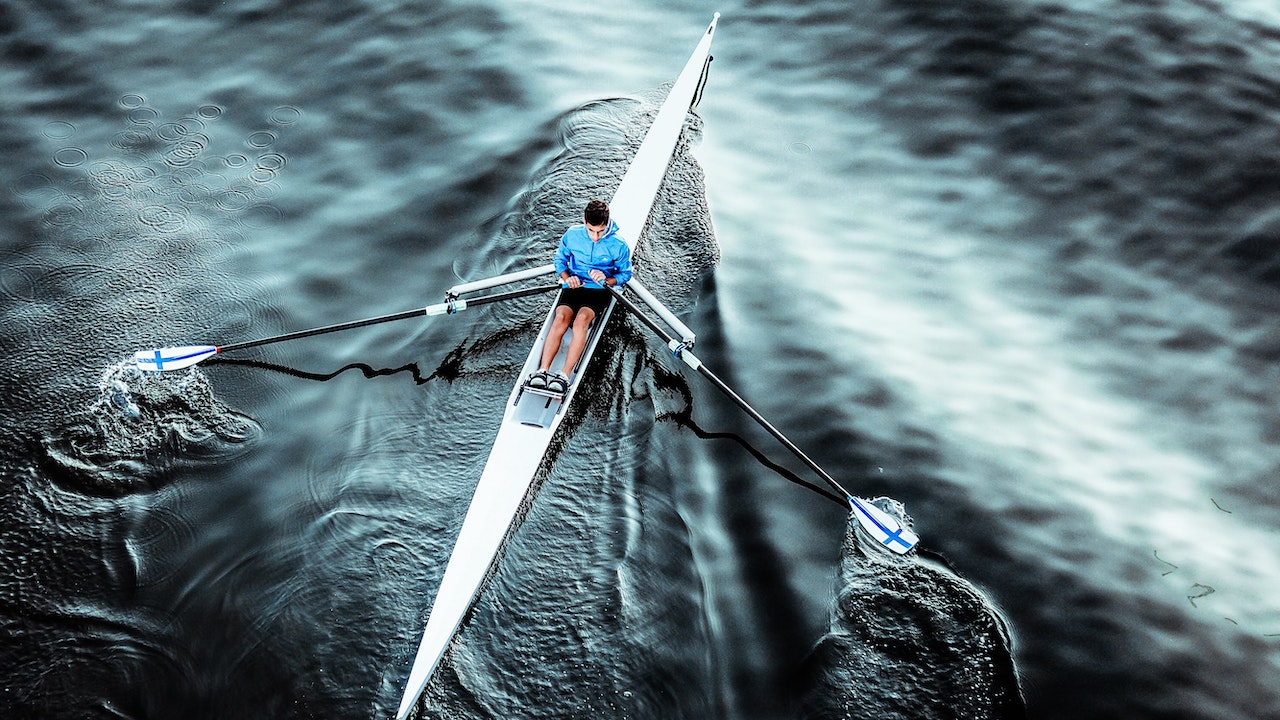Video analysis can be a valuable tool for identifying areas for improvement in rowing technique and developing a personalized training program. Here is a general outline of how video analysis can be incorporated into a rowing training program:
- Record video footage of the rower(s) performing the rowing stroke from multiple angles, using a camera mounted on the boat or from a stationary location on the shore.
- Use video analysis software, such as Dartfish or Kinovea, to review the footage and identify areas for improvement in rowing technique, such as body positioning, timing, or stroke mechanics.
- Work with a coach or trainer to develop a personalized training program based on the video analysis findings. The program may include specific drills or exercises to address the identified areas of improvement, as well as endurance and strength training tailored to the individual’s fitness level and goals.
- Record follow-up video footage to monitor progress and identify any remaining areas for improvement. Repeat the video analysis and training program development process as needed to continue improving rowing technique and performance.
Video analysis can be used on your training sessions to improve your performance in the following areas
Proper technique for the rowing stroke:
- Training drills can help to develop proper technique for the rowing stroke. Examples include pause drills, where the rower pauses at various points in the stroke to emphasize proper positioning, and half-slide drills, where the rower rows only to the halfway point of the slide to focus on body positioning and posture.
Correct body positioning and posture:
- Exercises to strengthen the core, back, and leg muscles can help to improve body positioning and posture in rowing. Examples include planks, back extensions, and squats.
Effective use of leg drive:
- Strength training exercises, such as squats, deadlifts, and lunges, can help to develop the leg muscles needed for effective leg drive in rowing. Endurance training, such as long steady-state rowing sessions or interval training, can help to improve leg endurance and power.
Consistent rhythm and timing:
- Drills that focus on timing and rhythm can help to improve consistency in rowing. Examples include mirror drills, where the rower mirrors the movements of a more experienced rower, and pause drills where the rower pauses at specific points in the stroke to synchronize with the rest of the crew.
Efficient breathing:
- Breathing exercises, such as diaphragmatic breathing, can help to improve breathing efficiency in rowing. Endurance training can also help to improve breathing efficiency and prevent fatigue.
Safety protocols:
- Safety training should be an integral part of any rowing program, and should include instruction on proper use of equipment, navigation rules, and emergency protocols.
Practice and training:
- Rowing programs should include a mix of endurance, strength, and technique training, tailored to the individual needs of the rower. A typical rowing program may include 3-5 sessions per week, with a mix of steady-state and interval training, along with technique and strength drills.
Communication and teamwork:
- Team building exercises and drills, such as paired rowing or crew-building activities, can help to improve communication and teamwork among rowers.
Recovery and self-care:
A well-rounded training program should include adequate rest, nutrition, hydration, and injury prevention strategies, such as stretching and foam rolling. It is also important to include rest days in the training program to allow for recovery and prevent overtraining.


